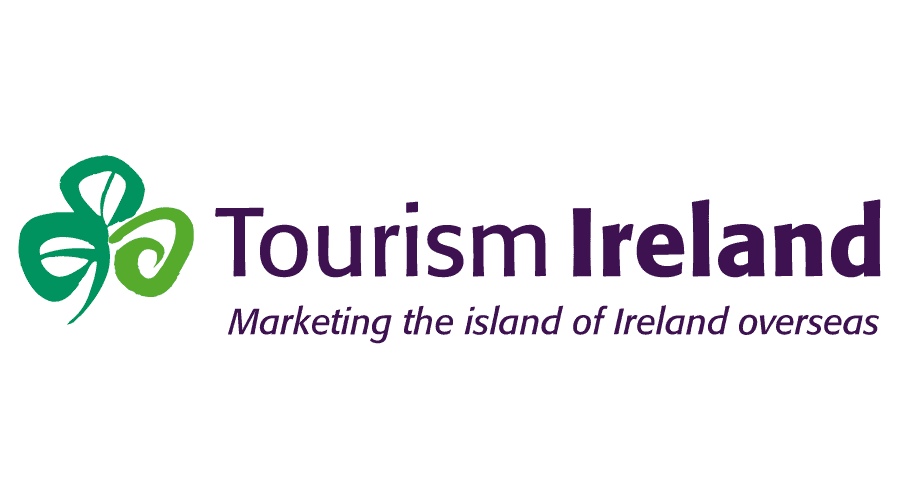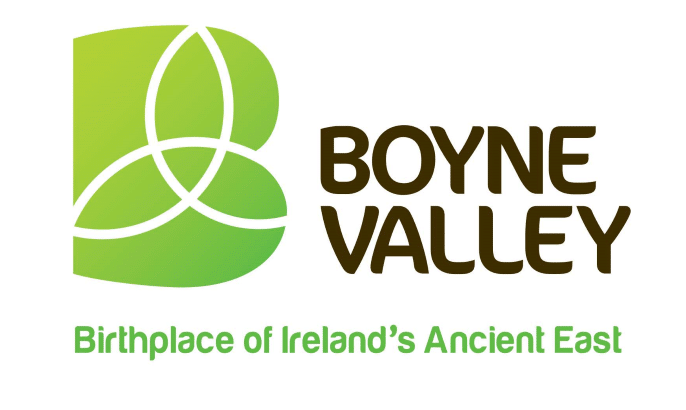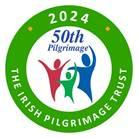6000 Years Historical County Meath Tour
Our Day Tour of the Historical County Meath is a one-in-a-kind experience. We include more items on our Meath Tours than any other Tour Operator, including a Viewing from the Outside of a Famine House (designed 1838 – 1841 and used as Famine Workhouse 1845 – 1849) as well as a viewing of a Famine memorial Graveyard. We also include a viewing of an original Motte from the Norman Period 1169 AD and used in Construction of the Motte and Bailey.
Discover the heart of the destinations with our knowledgeable and experienced guides throughout Counties Meath & Louth.
The 6,000 years of Irelands History be part of the heritage & see it all one day.
One off the below will be included within the 9,000 Years History Day Tour:
- Newgrange World UNESCO site 4,000 BC
· Lough Crew Cairns 4,000 BC
· Fourknocks. 4,000 BC
All off the below will be included within the 6,000 Years History Meath Day Tour:
· Raths and Hill Forts, 500 BC
· Hill off Tara & Mound of the Hostages, 3500 BC
· Hill of Slane 433 AD
· Monasterboice, 5th Century with pre Christian Grave. The Tallest High Cross in Ireland and the most detailed High Cross in Ireland 9th Century.
· Kells Replica book and St Columba’s House 10th Century
· Trim Medieval Town and Castle (Exterior view Last Tour 5pm) 1169 AD
· Battle of the Boyne site 1690 AD
· Dunshaughlin Famine Workhouse (exterior view only) 1838 -1850
· Dunshaughlin (Motte & Bailey 1169 AD)
· Famine Graveyard at Kells 1850 AD
· Llyod’s Spire, Kells. 1790 AD
This is a once in a life time Tour which encompasses most facets of Irish Life as your Ancestors knew from the Mesolithic era 7500 years BC to the Famine Period 1845-51 AD.

Kells: St Columbas Church, Kells and Replica Book of Kells
St Columba’s Church and Grounds mark the original site of the Monastary of Kells. St. Columba’s Church stands on one of the most important Church sites in Co. Meath The ‘Annals of Ulster’ for the year 804CE show that the Columban community on the island of Iona transferred to Kells which then became the principal Irish Columban monastery and it was here that The Great Book of Kells was completed.
We arrange a private viewing of St Columba’s Church for our Clients.
BACK TO THE MAPNewgrange Irelands Neolithic Period 4,000 BC
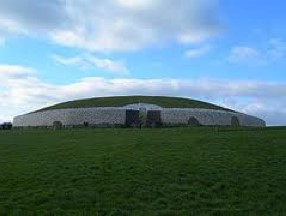 The World UNESCO Megalithic Passage Tomb at Newgrange (Bru na Boinne) was built about 3200 BC. The kidney shaped mound covers an area of over one acre and is surrounded by 97 kerbstones, some of which are richly decorated with megalithic art. The passage and chamber are illuminated once a year on the 21st December at the Winter Solstice.
The World UNESCO Megalithic Passage Tomb at Newgrange (Bru na Boinne) was built about 3200 BC. The kidney shaped mound covers an area of over one acre and is surrounded by 97 kerbstones, some of which are richly decorated with megalithic art. The passage and chamber are illuminated once a year on the 21st December at the Winter Solstice.
Megalithic mounds such as Newgrange entered Irish mythology as sídhe or fairy mounds. Your Genealogy experience of Ireland starts here when man finally decides to settle down and Farm the rich agricultural land in Ireland.
BACK TO THE MAPBattle of the Boyne site
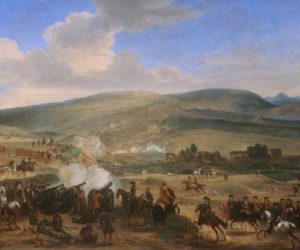 The Battle of the Boyne was a battle in 1690 between the Catholic King James II and the Protestant King William III of England and II of Scotland battle took place at the River Boyne near the town of Drogheda on the east coast of Ireland, and resulted in a victory for King William. This turned the tide in King James’s failed attempt to regain the British crown and ultimately aided in ensuring the continued Protestant Ascendancy in Ireland. Learn how this one action reflected on your Ancestors’ Lives in Ireland.
The Battle of the Boyne was a battle in 1690 between the Catholic King James II and the Protestant King William III of England and II of Scotland battle took place at the River Boyne near the town of Drogheda on the east coast of Ireland, and resulted in a victory for King William. This turned the tide in King James’s failed attempt to regain the British crown and ultimately aided in ensuring the continued Protestant Ascendancy in Ireland. Learn how this one action reflected on your Ancestors’ Lives in Ireland.
We also visit the Heritage Centre for the Battle of the Boyne.
Please Note that this part of the Tour will encompass a Drive by off Drogheda Town. First Town to be Sacked and burnt by Oliver Cromwell in 1649. Possible sites which you may see Barbican Gate (largest in the British Isles). The Black abbey ruin 1232 AD. The Drogheda Town walls.
BACK TO THE MAPTrim Castle & Medieval Town of Trim
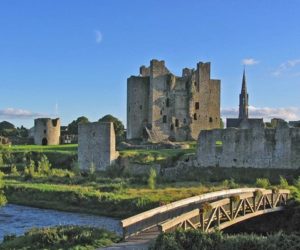 One of Ireland’s heritage towns, Trim is situated on the River Boyne. The town is dominated by the medieval Trim Castle, which was built by Hugh de Lacy in 1173. The largest Norman castle in Europe, it is now restored and visitors can access the 75ft square keep and grounds by guided tour. Sections of the epic film Braveheart were filmed here.
One of Ireland’s heritage towns, Trim is situated on the River Boyne. The town is dominated by the medieval Trim Castle, which was built by Hugh de Lacy in 1173. The largest Norman castle in Europe, it is now restored and visitors can access the 75ft square keep and grounds by guided tour. Sections of the epic film Braveheart were filmed here.
Also in the Town the Oldest unaltered Bridge in Ireland / The Oldest Anglican Ruins in Ireland.
BACK TO THE MAPMonasterboice
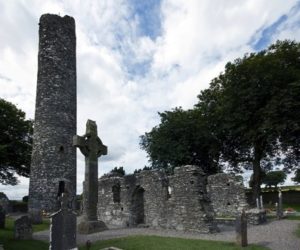 Tallest medieval building in Ireland at Trim County Meath
Tallest medieval building in Ireland at Trim County Meath
The historic ruins of Monasterboice are of an early Christian settlement in County Louth in Ireland, north of Drogheda. It was founded in the late 5th century by Saint Buithe
The site houses two churches built in the 13th century and an earlier round tower, but it is most famous for its 10th century high crosses.
The High Cross of Muiredach is regarded as the finest high cross in the whole of Ireland and features biblical carvings of both the Old and New Testaments of the Bible. It also features the Highest Cross in Ireland at 7 meters Tall.
Also seen is a Bullaun Stone associated with St. Aid Bishop of Killare in 6th-century. At Saint Aid’s birth his head had hit a stone, leaving a hole in which collected rainwater that cured all ailments, thus identifying it with the Irish tradition of Bullaun stones.
Finally a pre Christian Grave is also seen with the Grave stone remarkably preserved.
BACK TO THE MAPAncient Hill of Tara
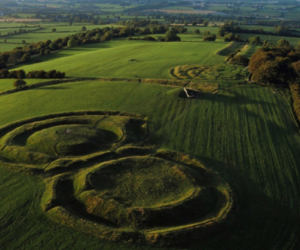 The Hill of Tara is an ancient Neolithic Age site in County Meath, Ireland and the home of the High Kings of Ireland. The oldest monument at the site is the Mound of the Hostages, a Neolithic passage tomb, dating from c. 3200 BCE. The ring forts and other enclosures, such as the Banquet Hall, date from the Iron Age. The Lia Fail (stone of destiny), by which the ancient kings were inaugurated, still stands on the hill. The site is also associated with the Tuatha De Danaan, the pre-Celtic peoples of Ireland and with the mystical elements they came to embody.
The Hill of Tara is an ancient Neolithic Age site in County Meath, Ireland and the home of the High Kings of Ireland. The oldest monument at the site is the Mound of the Hostages, a Neolithic passage tomb, dating from c. 3200 BCE. The ring forts and other enclosures, such as the Banquet Hall, date from the Iron Age. The Lia Fail (stone of destiny), by which the ancient kings were inaugurated, still stands on the hill. The site is also associated with the Tuatha De Danaan, the pre-Celtic peoples of Ireland and with the mystical elements they came to embody.
Ancient Hill of Slane
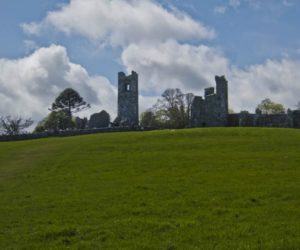 The great Festivals of pagan Ireland were announced by a bonfire on the hill which would have been seen for many miles in every direction. Here St Patrick lit the Pascal Fire 433 AD in Defiance of the High King of Tara King Laoghaire. The King eventually gave Patrick permission to convert the Irish People to Christianity.
The great Festivals of pagan Ireland were announced by a bonfire on the hill which would have been seen for many miles in every direction. Here St Patrick lit the Pascal Fire 433 AD in Defiance of the High King of Tara King Laoghaire. The King eventually gave Patrick permission to convert the Irish People to Christianity.
Spyre of Lloyd and Famine Graveyard
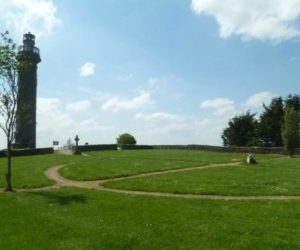 At Kells, the first Earl of Bective erected the Spire of Lloyd, a mock lighthouse, in 1791 in memory of his father Sir Thomas Taylor. It is the only inland lighthouse in Ireland (not accessible) and it gives panoramic views of five which you can see on this Tour.
At Kells, the first Earl of Bective erected the Spire of Lloyd, a mock lighthouse, in 1791 in memory of his father Sir Thomas Taylor. It is the only inland lighthouse in Ireland (not accessible) and it gives panoramic views of five which you can see on this Tour.
Famine Period 1845-1851 AD
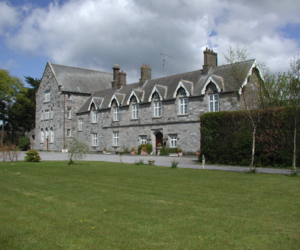
Dunshaughlin Poor Law Union was formally declared on the 1st April 1839 and the elected Board of Guardians oversaw operation, 26 in number, representing its 12 electoral divisions and still is today. The Board also included 8 ex Guardians, making a total of 34.
Erected in 1840-41 to accommodate 400 inmates the workhouse had a two-storey entrance and administrative block facing to the road at the west. On the first floor was the board room where the Guardians met each week.
During the famine in the mid1840s, stables and probationary wards were converted into sleeping apartments to accommodate an additional 71 inmates. Initially, 25 fever patients were treated in a house hired for use as a fever hospital, with the workhouse stables also fitted up for the reception of new patients. A fever hospital was subsequently erected to the north of the workhouse.
Please note this Building is privately owned and an exterior view is only available.
However a Famine 1845-50 burial ground is located to the rear of the workhouse and is accessible. A wing containing children’s accommodation and schoolrooms the accommodation block was linked to an infirmary at the rear by a central spine containing the dining hall and chapel.
BACK TO THE MAP



